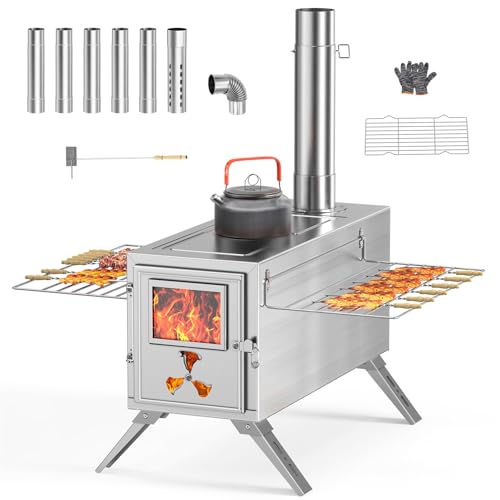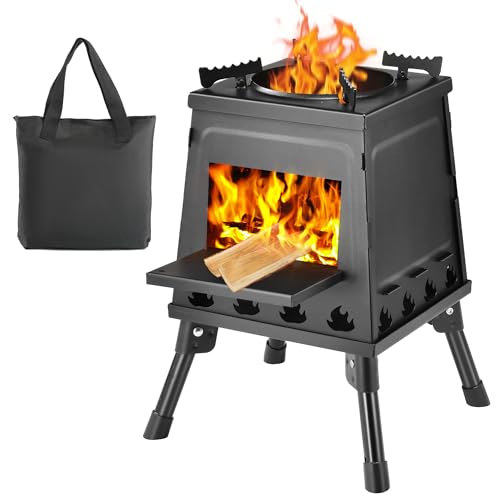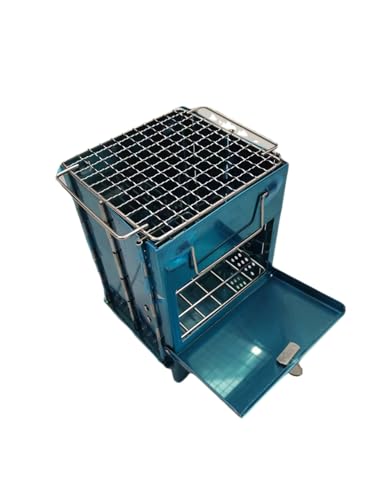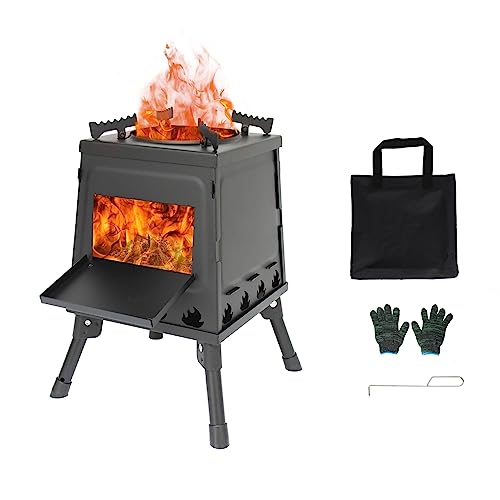The Collapsible Rocket Stove: A Portable Wood-Burning Cooker Revolution
In a world that increasingly values sustainability and efficiency, the collapsible rocket stove has emerged as a remarkable innovation. This portable wood-burning cooker is designed for outdoor cooking enthusiasts, minimalists, survivalists, and anyone looking for an eco-friendly alternative to traditional cooking methods. With its unique design and functionality, the collapsible rocket stove is transforming the way people approach outdoor cooking and camping.
Understanding the Rocket Stove Concept
Rocket stoves work on a simple yet efficient principle of combustion. They utilize a vertical design that allows for a more complete burn of fuel, leading to higher temperatures and less smoke production. This principle is grounded in physics: the stove's chimney effect draws in air at the base, fueling the fire and providing a hot burn that efficiently cooks food with minimal wood consumption.
Advantages of Collapsible Rocket Stoves
The collapsible rocket stove takes this efficient design further by enhancing portability and usability. Here are some advantages of these stoves:
- Portability: The collapsible feature allows for easy transport, making it ideal for camping trips, hiking expeditions, or even backyard use.
- Eco-Friendly: By utilizing small twigs and branches as fuel, users can minimize their carbon footprint while taking advantage of renewable resources.
- Efficient Design: Provides high-heat output with less fuel, optimizing the cooking experience and reducing waste.
- Cost-Effective: Using natural materials as fuel can significantly lower the cost of cooking as compared to gas or charcoal.
- Durability: Made with high-quality materials, collapsible rocket stoves are built to last and withstand harsh weather conditions.
Features to Look for in a Collapsible Rocket Stove
When shopping for a collapsible rocket stove, customers should consider various features that contribute to the overall performance and user experience:
- Material: Look for stainless steel or other high-temperature resistant metals that can withstand high heat and environmental factors.
- Weight: For the sake of portability, choose a model that is light yet sturdy enough to handle the demands of cooking.
- Design: A well-engineered design ensures better airflow and combustion efficiency, resulting in faster cooking times.
- Size: Depending on individual needs, stoves come in various sizes. Consider how many people you’ll typically be cooking for.
- Accessories: Some models come with additional components like cooking grates, pots, or carrying cases, adding to their versatility.
How to Use a Collapsible Rocket Stove
Using a collapsible rocket stove is straightforward, but it does require some knowledge about fire-starting techniques and wood selection. Here’s a step-by-step guide:
- Setup: Unfold the stove and ensure that all components are securely in place.
- Fuel Preparation: Gather small, dry sticks and twigs. Sizeable pieces can also be used, but they may reduce efficiency.
- Starting the Fire: Light kindling or tinder and place it at the base of the stove. Gradually add small pieces of wood once the fire is established.
- Cooking: Adjust the placement of the pot or pan on the cooking grate. Maintain a continuous supply of wood as needed.
- Extinguish the Fire: Once finished, ensure that the fire is completely extinguished and the stove is cooled before collapsing it.
Tips for Efficient Cooking
To maximize the use of a collapsible rocket stove, users should consider the following tips:
- Use Dry Wood: Wet or damp wood will create excess smoke and make it harder to keep a flame.
- Pre-cut Wood: Cut wood into smaller sections for easier stacking and better airflow.
- Maintain Airflow: Ensure that the stove's vents are unobstructed to sustain combustion.
- Control Heat: Adjust the amount of fuel to regulate cooking temperature; less fuel means lower heat and vice versa.
Frequently Asked Questions (FAQs)
1. Can a collapsible rocket stove be used indoors?
While collapsible rocket stoves are primarily designed for outdoor use, some individuals do use them indoors with adequate ventilation. However, this is not generally recommended due to the risk of smoke inhalation and fire hazards.
2. What types of wood are best for a rocket stove?
Dry hardwoods like oak, maple, or hickory are preferred for cooking, as they burn hotter and longer. Softwoods like pine can also be used but may produce more smoke and creosote.
3. How does a rocket stove compare to traditional camp stoves?
Rocket stoves are more fuel-efficient and produce less smoke than traditional camp stoves, providing a cleaner cooking experience. They tend to be more reliant on natural materials as fuel, making them more sustainable.
4. How long does a fire last in a rocket stove?
The duration of the fire depends on the type and amount of wood used. Generally, a small stove can sustain a fire for about 30 minutes to an hour with consistent fueling.
5. Are collapsible rocket stoves safe for children to use?
Caution is advised when children are near any fire source. While the construction of collapsible rocket stoves is designed to minimize risks, adult supervision is essential if children are involved in the cooking process.
The collapsible rocket stove is a breakthrough in portable cooking solutions that combines efficiency with sustainability. Ideal for outdoor adventurers, campers, and environmentally conscious chefs, this stove provides a reliable and eco-friendly means of preparing meals in the great outdoors. By understanding its features, benefits, and efficient usage, users can truly maximize their experience and enjoy the wholesome essence of cooking with natural fuel. Whether for an extended camping trip or backyard gathering, the collapsible rocket stove has solidified its place as an essential tool for modern outdoor cooking.






